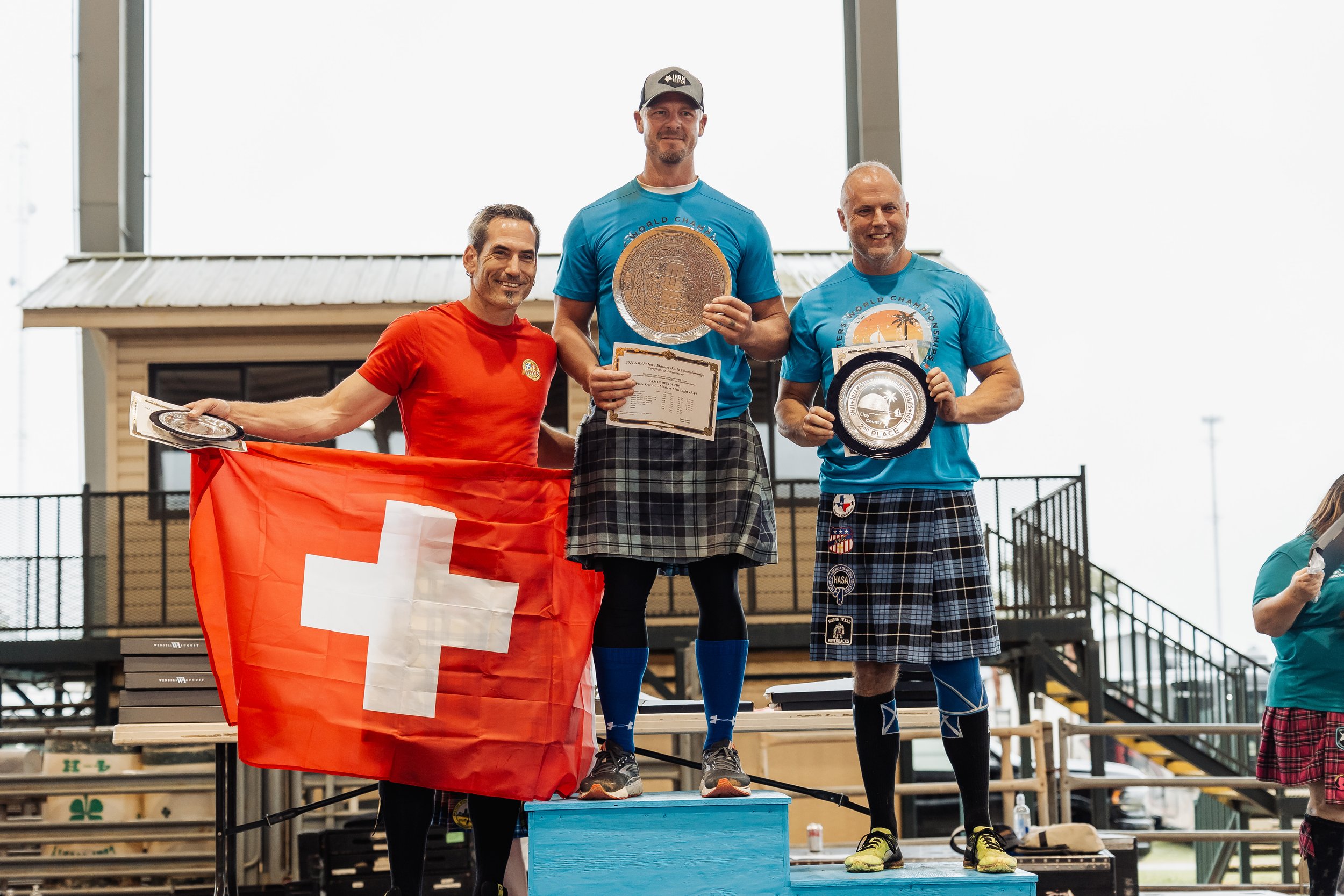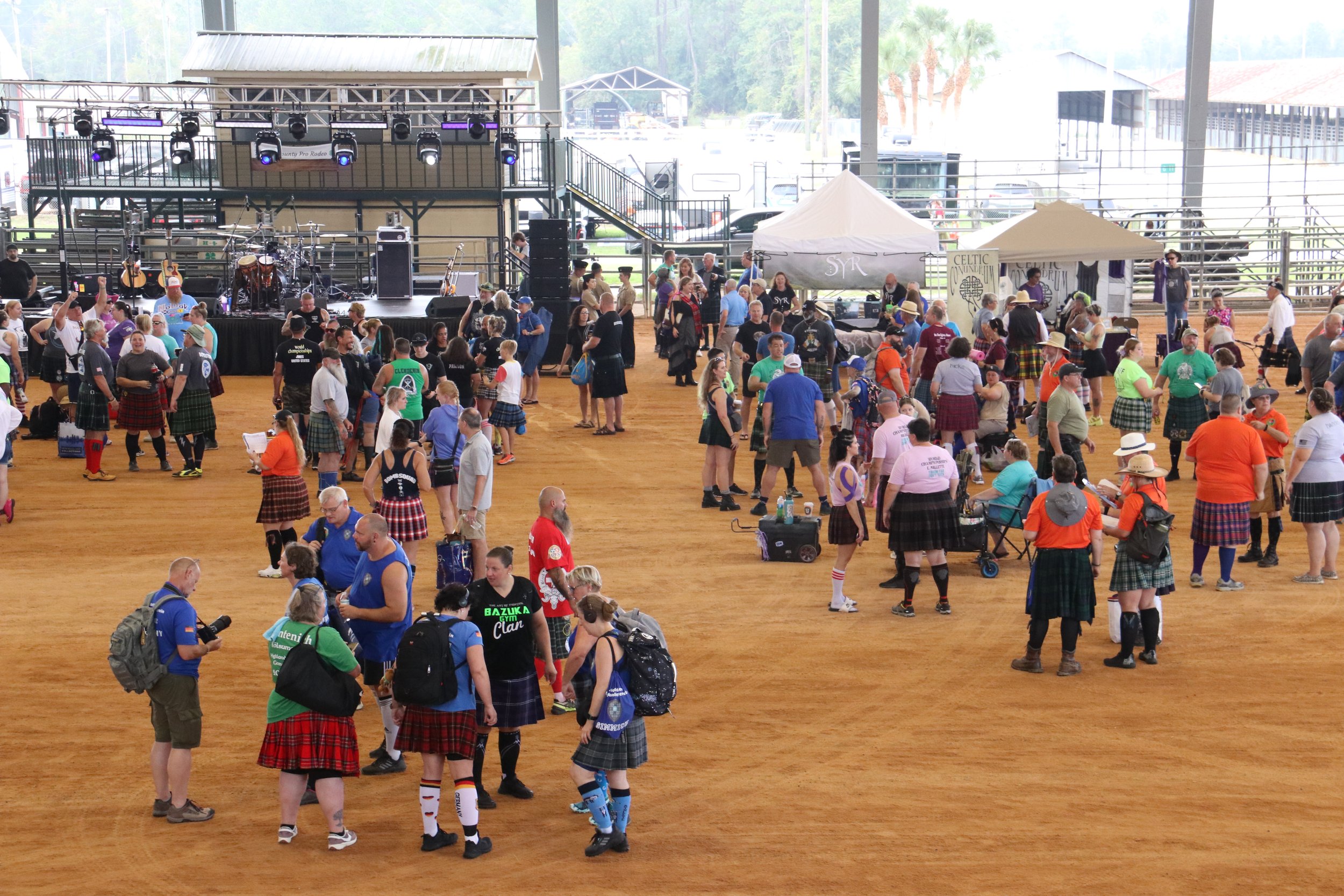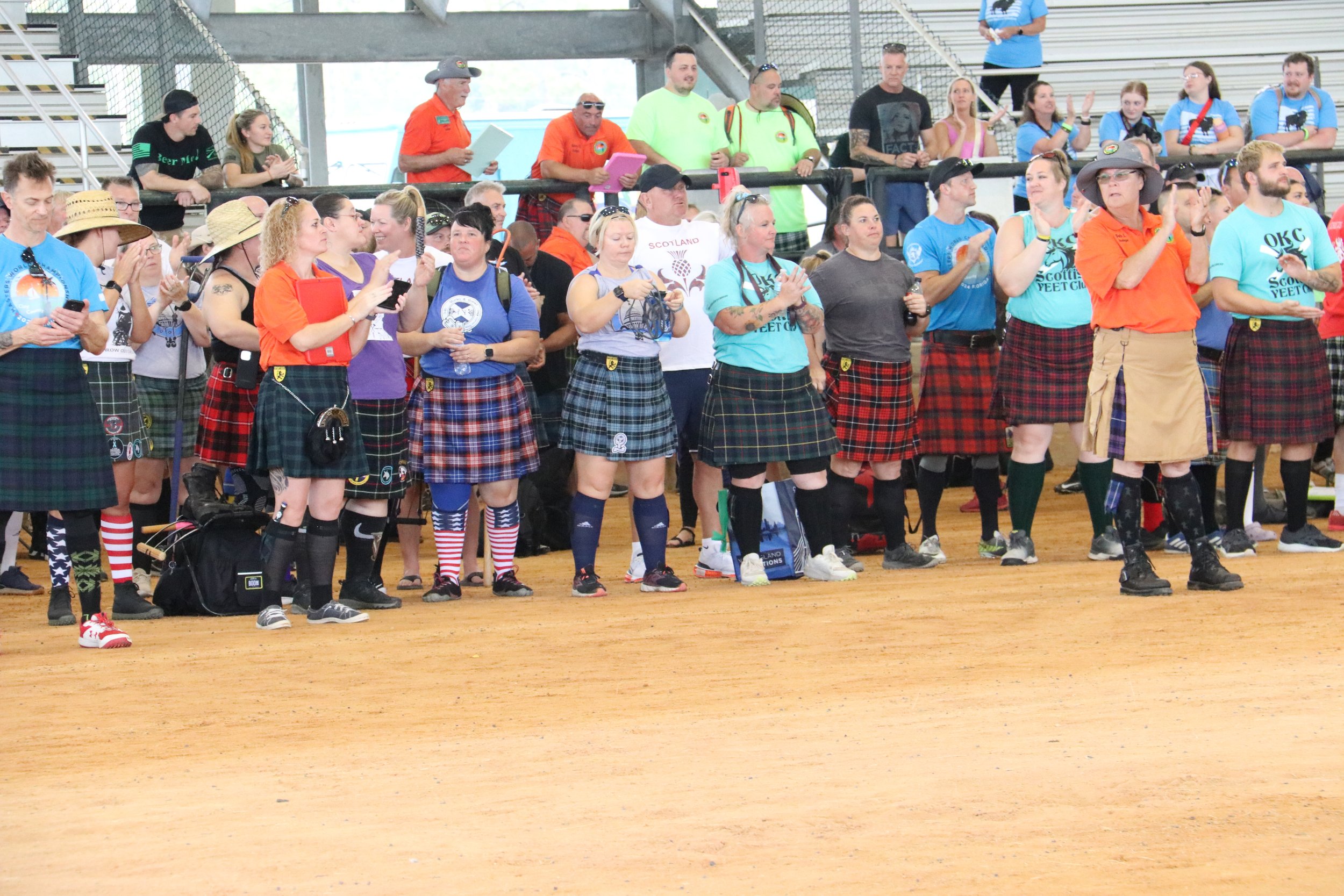General Rules for All Events
A Scottish Heavy Events competition is defined by at least five of the events listed above. If only five events are used, then no two events will be similar (such as two stones, two weight throws for distance, or two hammers).
If an implement breaks during a competition and cannot be repaired quickly, the round in which it broke should be started over with a new implement being used. If the judge determines that time does not allow for this, then a new implement will be used and the round continued where it left off.
In the interest of safety, the judge has the right to disqualify any competitors who in their opinion do not have the ability to complete a throw without injuring themselves, other competitors or spectators. The judge also has the right to disqualify any competitors who display poor sportsmanship.
All competitors competing will wear a kilt during the competition.
The judge may apply a time limit to each throw if he feels it is necessary. If the competitor does not begin the throw within this time limit the attempt will be a foul.
In the event of a tie after any of the above tie-breaking methods have been applied, the points for the places in question will be added together and divided evenly among the tied competitors.
The trig is to be made of wood. The trig will be 4'-6" long, 6" tall, and 6" wide. Every effort shall be made to secure the trig to the ground so that it will not move during the event if a competitor steps against it.
The winner of the event may take three extra throws to try to break a record, whether it be a Games Record, North American Record, or World Record. Extra throws taken for records will not count for points in the decathlon scoring system.
Individual fingers or the thumb of the throwing hand may be taped but the fingers or thumb will not be taped together. No straps or other devices besides a glove will be used to aid the competitor in holding the implement. No footwear that may aid in increasing the athlete's height will be used in the events thrown for height.
In order for a competitor to win or place in an overall competition, they must attempt to compete in all of the events. At the discretion of the judge, if the competitor does not attempt to compete in all the events then they will not receive points or awards for the individual events or the overall competition.
The points for an event are usually awarded in one of three ways: one point method with least points wins, one point method with most points wins, and the decathlon scoring systems.
One point scoring method examples:
Most points winsLeast points wins615243342516
The one point scoring system is recommended. The decathlon scoring system uses either the best throw of an event at that competition or the World Record for that event as 1000 points. All throws are awarded points based on this distance or height. For example: if the best throw in the stone put is 50'-0", then this is worth 1000 points, if another competitor throws 45'-0" then this throw is worth 45/50*1000=900 points.
To determine the overall champion the total amount of points accumulated throughout the competition will be added together and the competitor with the most or fewest points, whichever the case, will be declared the winner. If there is a tie for first place overall then the winner will be the competitor with the most first places in the individual events. If this does not produce a winner then the competitors will remain tied. All other overall places besides first will remain a tie.Measurements shall be recorded after rounding the measurement down to the nearest 1/4" in all of the events.
After each completed event, the competitor who threw first is now placed last in the next event and all other competitors move up one place. This is repeated after every event.
When an American, North American, or World Record has been broken it is the responsibility of the Judge or Athletic Director to verify that record. The Record must be set within all rules for that event. The implement will be weighed on a certified scale and the weight will be equal to or more than the legal weight for that implement. In the case of the Weights for Distance, the Weight for Height, and the Hammer Throw, the overall length of the implement will be measured and the length will be equal to or less than the legal length of that implement.
American records must be set by a competitor with American citizenship and may be set anywhere in the world. Canadian records must be set a competitor with Canadian citizenship and may be set anywhere in the world. North American records must be set by a competitor with citizenship in North American and may be set anywhere in the world. World records may be set by any competitor anywhere in the world.
Safety must be a paramount concern to all the organizers, judges, competitors, helpers, and spectators present at the competition. Precautions should be taken to protect these people. The throwing area should be roped off to keep spectators off the athletic field. There should be some type of cage or backstop for the hammer throw.
The order of events is recommended to be as follows: Stone Put(s), Weight Throw(s) for Distance, Hammer Throw(s), Caber Toss, Sheaf Toss and Weight for Height. If the competition is spread over two days, the events should be arranged so that there is equal heavy and light implements thrown on each day.
If the judge has a doubt about calling a foul on a competitor then no foul should be called.
Drug testing of any competitors is left to the discretion and capabilities of each Games being competed in. If a competitor is banned/suspended as a result of a drug test he will not be allowed to compete until the ban/suspension is over. Bans/suspensions from other sports will be enforced. Competitors banned/suspended from another sport will not be allowed to compete in a Games.




